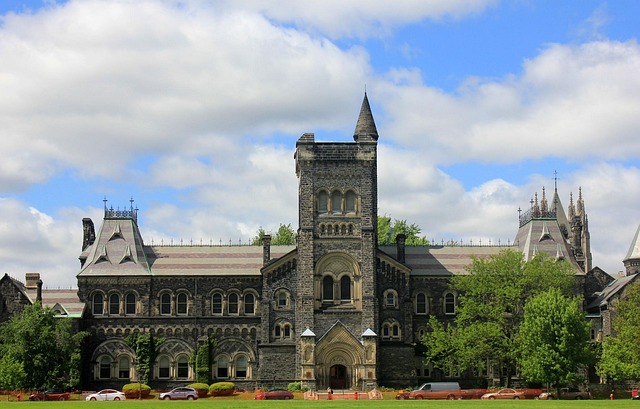Choosing the best university cities for student rentals involves understanding dynamic local housing markets influenced by university enrollment, economic health, and policies. Top college towns offer vibrant communities, social opportunities, and diverse housing options but face high demand with limited supply, resulting in competitive rental markets and higher costs. A comprehensive college housing guide recommends evaluating cities based on affordability, campus proximity, safety, and amenities while considering potential drawbacks like noise and maintenance challenges for landlords. Early planning is key to securing ideal choices in these popular university cities, where student housing pros and cons significantly impact the experience.
Choosing the right university city for student rentals can significantly impact your academic experience and future prospects. This comprehensive guide, “Understanding Student Housing Markets: A Comprehensive Guide,” explores the intricacies of student rental markets and provides a detailed analysis of top college towns. Weighing the pros and cons of various locations, we unlock key factors to consider when selecting the best university cities for student housing. By navigating current trends in student rental markets, you’ll discover what makes a city ideal for both students and landlords alike.
- Understanding Student Housing Markets: A Comprehensive Guide
- Top College Towns: Weighing Pros and Cons for Student Rentals
- Unlocking the Best University Cities for Student Housing: Key Factors to Consider
- Navigating Student Rental Trends: What Makes a City Ideal?
Understanding Student Housing Markets: A Comprehensive Guide

Choosing a university city for student rentals involves understanding the local housing market, which is a complex mix of pros and cons. Student housing markets are dynamic, influenced by factors such as university enrollment, economic health, and local policies. In top college towns, demand often exceeds supply, leading to competitive rental markets with varying prices and property conditions.
A comprehensive college housing guide suggests evaluating cities based on affordability, proximity to campus, safety, and amenities. Pros of student rentals include exposure to vibrant communities, social opportunities, and potential for long-term investment. Cons may include higher costs, noise levels, and the need for consistent maintenance from landlords. By considering these aspects, students and parents can make informed decisions when navigating best university cities for rental options.
Top College Towns: Weighing Pros and Cons for Student Rentals

Top College Towns offer a unique blend of academic rigor and vibrant social life, making them attractive destinations for students seeking both quality education and enriching experiences. When considering university cities for rentals, weighing the pros and cons is essential to ensure a positive living environment.
On the advantages side, these college towns often boast robust student rental markets with diverse housing options, from shared apartments to off-campus suites. The presence of multiple universities can create a bustling atmosphere, with ample social events, cultural activities, and diverse dining scenes catering to students’ needs. Moreover, many top college towns have well-developed infrastructure, including efficient public transportation systems, making navigation within the city convenient for students. However, one potential challenge is the higher cost of living, as rental prices can be significantly influenced by the competitive student housing market. Competition for accommodations can also be intense during peak seasons, requiring students to plan and secure their ideal choices early on.
Unlocking the Best University Cities for Student Housing: Key Factors to Consider

When exploring the best university cities for student rentals, several key factors come into play. Firstly, consider the vibrancy and energy of the city itself—a bustling college town offers not just a lively social scene but also robust student rental markets with diverse housing options. Top college towns often have well-established student housing pros and cons that can greatly influence a student’s experience; understanding these dynamics is crucial for finding the right fit.
Additionally, looking at demographic factors like population density, student-to-resident ratios, and the overall age distribution can provide valuable insights into the rental market’s competitiveness and affordability. A comprehensive college housing guide should also factor in accessibility to campus, safety metrics, and the availability of amenities tailored to students’ needs—all of which contribute to unlocking the ideal university cities rentals for a memorable student experience.
Navigating Student Rental Trends: What Makes a City Ideal?

Navigating Student Rental Trends: What Makes a City Ideal?
When exploring university cities for student rentals, understanding current rental markets is key. Top college towns often experience unique dynamics where demand outstrips supply, leading to competitive pricing and diverse housing options. According to a recent college housing guide, best university cities typically offer both pros and cons for students: vibrant atmospheres with access to cultural events, dining hotspots, and social activities, but also higher living costs and potential overcrowding.
Student rental markets in these ideal cities are influenced by several factors. Proximity to campuses is a major draw, as are robust public transportation systems that make commuting seamless. Additionally, safe neighborhoods with reliable internet connections and on-campus housing alternatives play significant roles in students’ decisions. Knowing these trends helps future students make informed choices when selecting their ideal university city for rentals.






